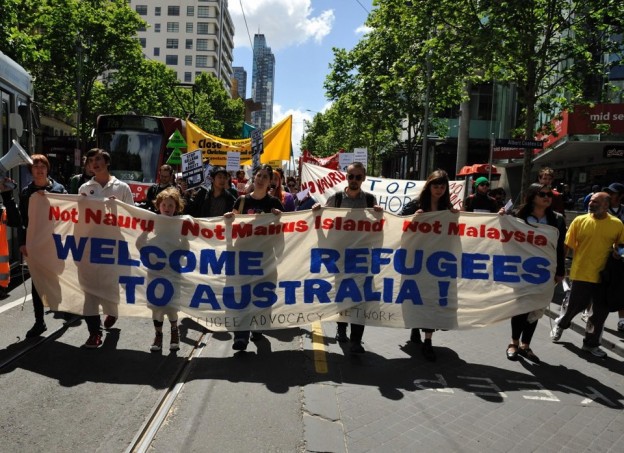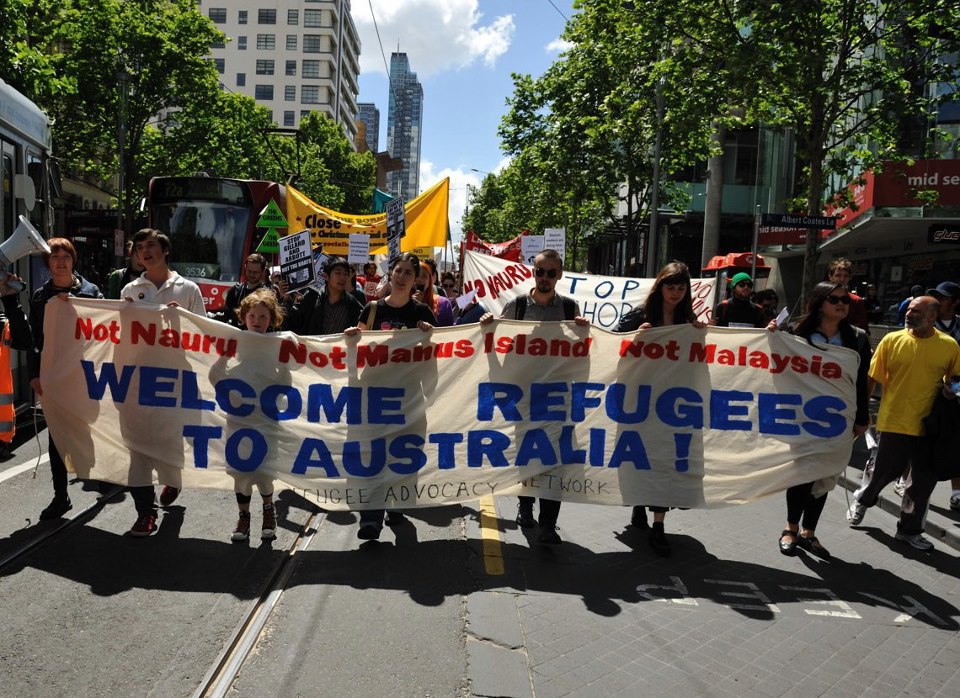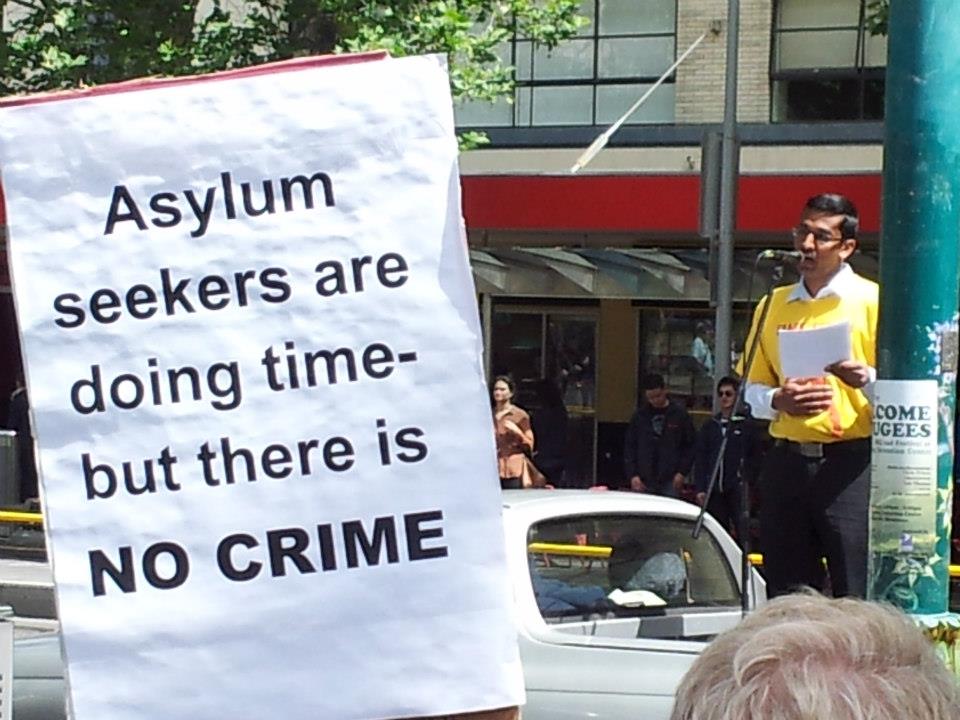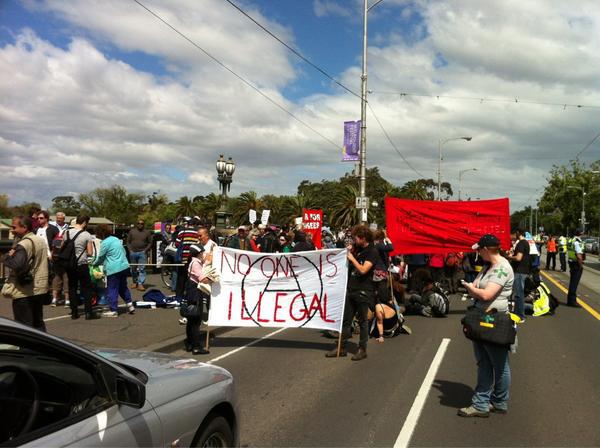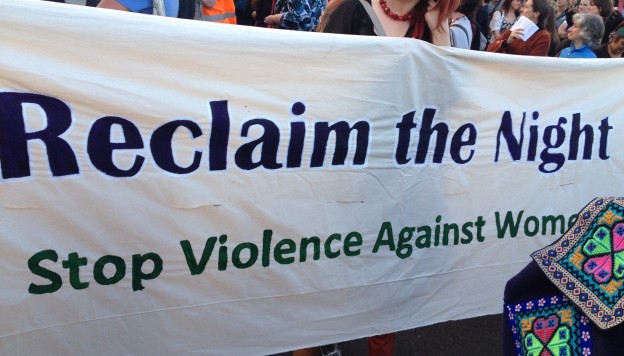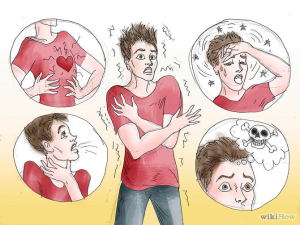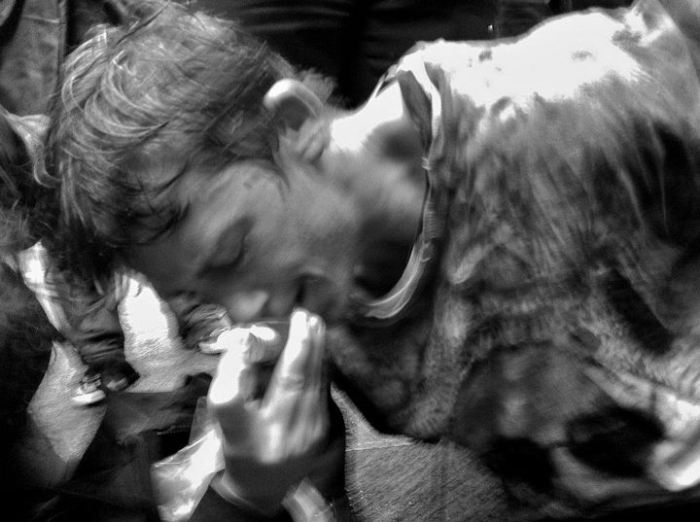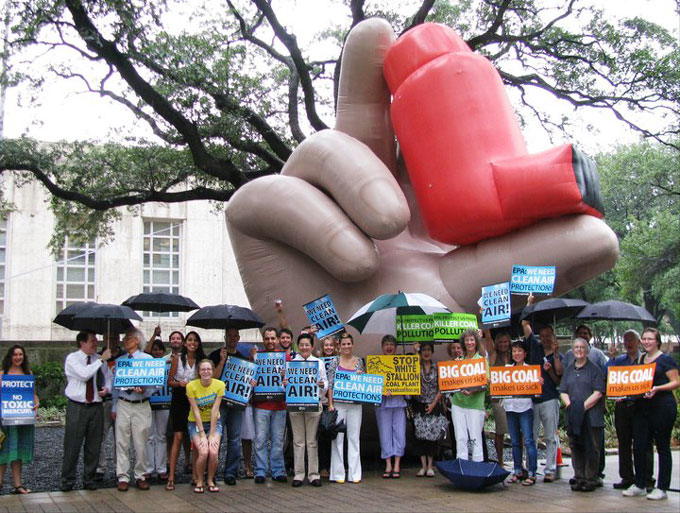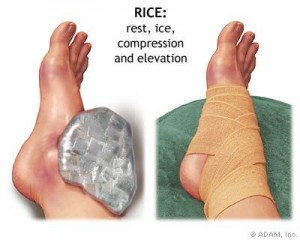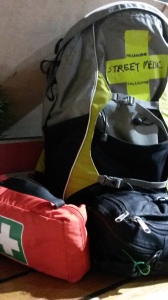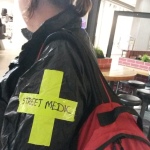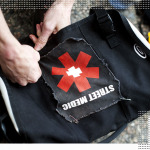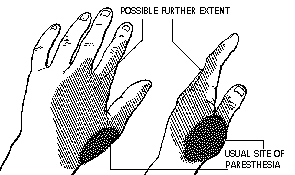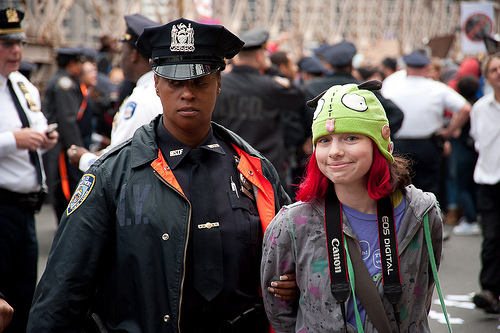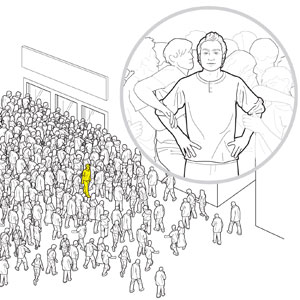Reclaim the Night has been running in Australia since 1978 and has been a march for Women to stand up to oppression, sexual assault, rape, victim blaming and all forms of violence. It has been a global event since the 1970s when women across the world took a stand against the crimes that were being committed against women in their local communities.
On the 20th of October this year Melbourne FACT took to Sydney Road in Brunswick to make sure the women and men reclaiming the streets could do so safely.
When we arrived at the corner of Barkley St and Sydney Road at about 6:45pm there was already a small group amassing in front of the ute that was being used to hold the sound system and as a platform for the speakers. When Melbourne FACT attends a rally we split into small groups of two or three street medics – our buddy teams. As a sign of respect to the attendees we divided into pairs that had both a male and female first aider (except for one group which was female only as we were going to walk up the front in the women only section). We felt that this was important as the emotions on the night were likely to be high and the nature of the action meant that female attendees may have felt uncomfortable approaching a male first aider for help.
The speeches started at 7pm and Melbourne FACT moved to our set locations to watch the crowd as more and more people joined the crowd on the road. There were 3 speakers who shared their views on the plight of women and the injustices that have plagued victims in the past (and still do) and discussed what they believed needed to happen in the future to change the issues facing women. Their speeches engaged the crowd and apart from one heckler the speeches went on without any issues and built up an incredible energy in the crowd.

At 7:45pm the MC for the night explained that the main banner was moving out onto the road and directly behind them there would be a women’s only section. By this point in time the crowd had swelled and the Lane heading toward Coburg on Sydney Road was closed by the police. As I was part of the group up the front it was great to see the women’s only section walking together and it was heart warming to know that there were groups of men and children in the section behind us walking in solidarity with the women. As we walked down Sydney Road we did not suffer any heckling or jeering, the local community responded passionately, many people honked their horn in support and people in local eateries cheering us on from the sidewalks.
By the time we had reached the finishing point of the march at the corner of Sparta Place and Sydney Road there were between 4,000 and 6,000 marching to reclaim the night. Some even suggested that there were 4,000 women marching and 2,000 men walking with them in solidarity. Either way the numbers were far greater than had been expected by the organisers and meant that for a period of time the crowd shut down an entire block and declared their intent to oppose violence in all its forms and to reclaim the night with chants and drum banging.
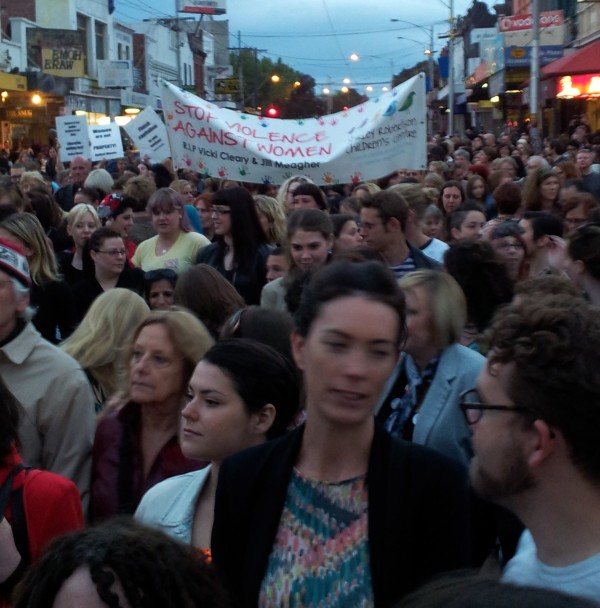
The march was highly successful with more attendees than expected and some news sources even stating that it was the largest Reclaim the Night to have happened in decades – hopefully with such high attendance and coverage in the main stream media these issues will start being faced by the greater public and cause social change.
We would like to thank the Organisers for arranging the march and for inviting MelbFACT to work with them.
